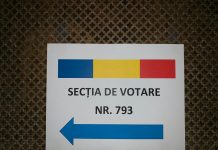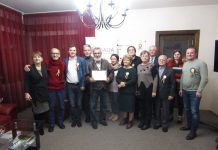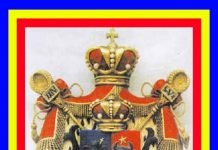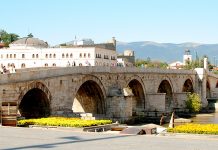May 10th has a triple meaning for the long history of the Romanian people. On this day in 1866, Carol Hohenzollern-Siegmaringen came to Romania as a constitutional prince, cementing the union between Wallachia and Moldavia as Romania. The union had taken place in 1859 under Alexandru Ioan Cuza, but after his forced abdication and exile, offering the leadership to a member of the European Royal House was the only way found by Romanian politicians to keep Romania together. Carol I, as he was called, ruled Romania for 48 years, and took Romania from the Middle Ages into the modern era. The Romanian Constitution was voted under his supervision.
This day is also associated with one of the most important events in Romanian 19th century history: the complete independence from the Turks, in 1877. Since the 16th century both Wallachia and Moldavia had been under Turkish suzerainty, and the formation of Romania had not changed anything. The war between Russia and Turkey started in 1876 and Romania found this a good opportunity to gain its independence. Romanian troupes fought and won against the Turks at Plevna, Grivita and Smirdan. Head of the army was Prince Carol I. His wife, Elisabeth (Carmen Silva) was on duty herself too, working in hospitals and helping the wounded. The proclamation of independence was intended to be on May 10th, celebrating the arrival to Romania of Prince Carol eleven years before. But May 10th fell on a weekend when the Parliament was not in session, so an extraordinary session of the Parliament took place a day before, on May 9th. The independence was proclaimed by the Prime Minister, Mihail Kogalniceanu. His speech was acclaimed by his colleagues and the entire population of Bucharest. Internationally, Romanian independence was recognized in 1878, at the peace signed at San Stefano and at the International Congress in Berlin.
The third important event in Romanian history that happened on this day is the crowning of Prince Carol. On April 29th 1881, the Romanian Parliament voted that Romania becomes a kingdom and on May 10th 1881 Carol and his wife were crowned as a Romanian King and Queen. Carol’s crown was made out of steel, from the material of a Turkish cannon captured at Plevna in 1877. As a kingdom, Romania became more powerful and its voice more important in European affairs.
In pre-communist Romania, May 10th was a beloved holiday, celebrating the Monarchy, which most Romanians felt had brought great advances to the country, and provided a link to Western Europe. During the communist regime, of course, this was a forbidden holiday, and May 9th was celebrated instead, as Independence day form the Turks, the day of victory against Germany, in 1945, and the birth of the Communist Party, on May 8th, 1921.











































